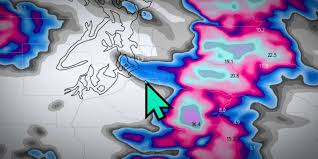
Forecasters at AccuWeather are monitoring

Although short-term tropical activity is not anticipated, AccuWeather analysts are keeping an eye on a number of long-range signs that may indicate when and where the next tropical storm may develop.
After Tropical Storm Arlene’s brief existence in the Gulf of Mexico at the beginning of June, the tropical Atlantic has become inactive. AccuWeather meteorologists are keeping an eye on a large region of tropical downpours in the Caribbean and following the possibility that activity would rise in the western Caribbean and the Gulf later this month, even if no tropical development is anticipated in the next few days. In the tropical Atlantic, June is the month when forecasters are most likely to keep an eye out for tropical development around North and Central America. This is because large-scale wind shear makes conditions across much of the basin too unfavourable for tropical storm development.
Instead, the majority of storms that form thus early in the season tend to do so close to big, weak circulations known as gyres, non-tropical low-pressure zones, or old, stalled fronts. Tropical downpours will saturate Bahamas and Cuba
In recent days, tropical downpours and locally strong thunderstorms have plagued regions from the western Caribbean to close to Bermuda. For the next week or two, activity along this severe weather zone will continue to range in severity.
Through the middle of June, parts of Cuba and the central Bahamas might receive 6 to 12 inches of rain. While areas of excessively dry weather may be relieved by the rain, it might potentially cause issues. Rain may occurA broad region of weak spin in the atmosphere known as the Central American Gyre, which tends to form from the western Caribbean to waters over the eastern Pacific, is likely to take shape around the middle of June, according to AccuWeather Tropical Meteorologist Alex DaSilva. Wind shear may also play a significant role in tropical development from the middle to the latter part of June in the same general area of the Atlantic basin.
A more condensed low-pressure region may develop in the western Caribbean, stray into the Gulf of Mexico, and then intensify in the third or fourth week of June, according to some long-range projections. The actual evolution of this system could, however, be slower than predicted .During the third week of June, a tropical disturbance known as a tropical wave will move westward across the Atlantic. Later in the month in the Caribbean, this system may attempt to organise into a more organised tropical system, according to AccuWeather Long-Range Meteorologist Joe Bauer. The western Caribbean and the southern Gulf of Mexico have particularly favourable water temperatures for the development of tropical storms, according to Pastelok.
From mid- to late-June throughout this region of the Atlantic basin, it will depend on whether or not significant wind shear lessens, according to Pastelok. According to data, wind shear may decrease over the Gulf during the third week of June, according to Pastelok. Later this month, the United States may experience a tropical concern if wind shear in this region decreases. Bret will be the name of the following named storm system in the Atlantic. Rarely does the Caribbean or Gulf side of the eastern Pacific see tropical development as a result of the Central America gyre. This is also a possibility, in addition to the slim likelihood of development later this year in both the eastern Pacific and Atlantic basins.